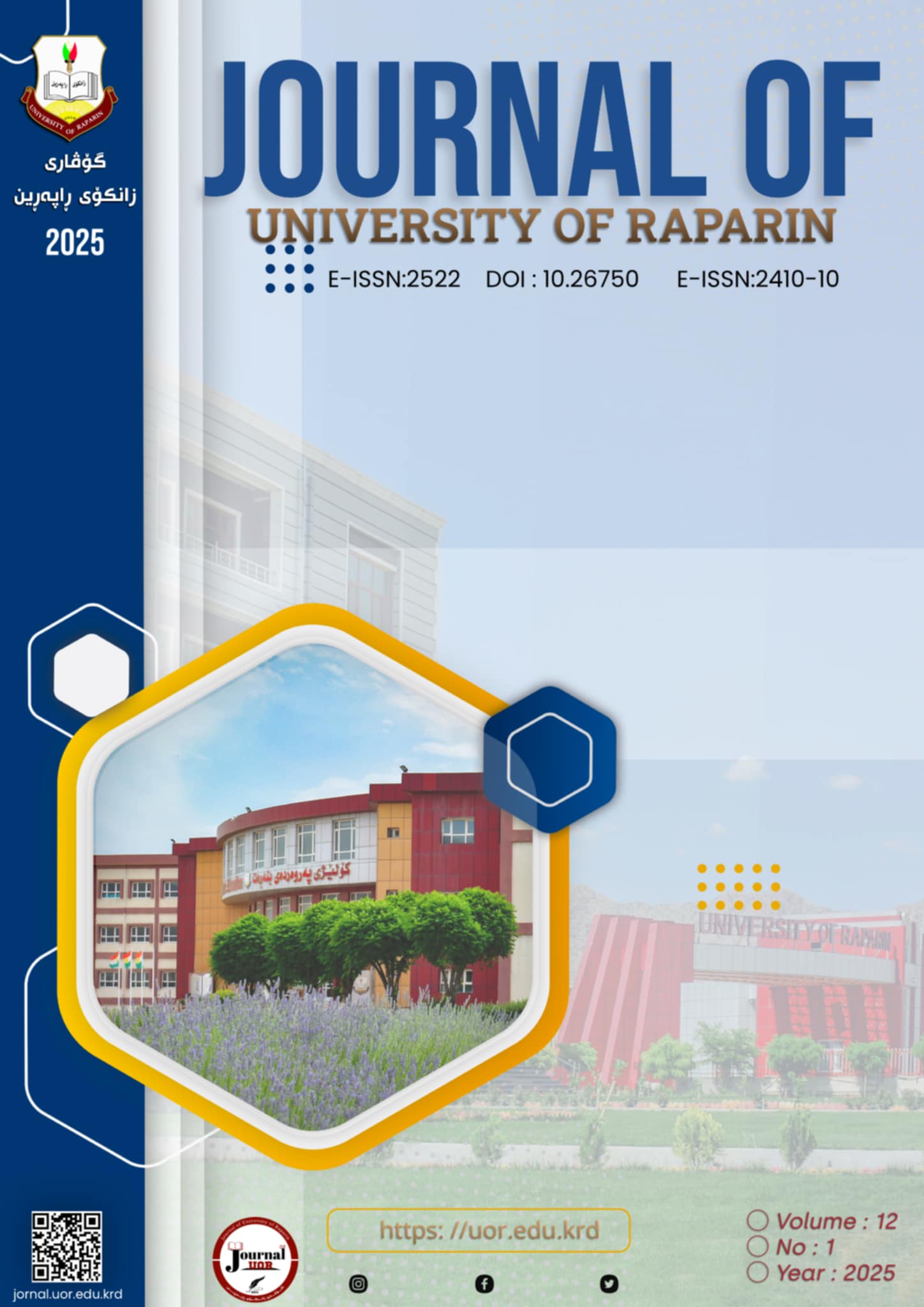Abstract
Human beings recollect memories, events, or certain actions by the way the snow-flakes cover the leaves of the olive tree in their backyard. It is the setting that gives life much of its meaning, shape and color. For the story writer, setting is the entrance for his readers through which they wander in the world which he creates. Setting is a crucial element of the narrative fiction. In some works of literature, it functions as a character. In certain cases (say a prison, for instance) the psychological toll of setting can be devastating. Writers intentionally set their stories in such a way as to guide their characters and help them not to go astray in outer space and time. The specific time, geographical location, and the mood of the character help the story evolve to attract the reader’s attention to what happens next. The texts chosen for this study have the theme of solitude in common. The researchers intend to explore the setting in these texts as they aim at finding the knot which ties the setting and the theme of solitude together. This study follows an interpretive-analytical methodology in which nine modern short stories are closely examined. The literary theory adopted in this research is psychoanalysis; for each text a method of psychoanalysis is applied. The researchers will answer the question of whether the setting plays any role in accelerating the characters’ awareness of solitude, despair and loneliness. The texts are Anton Chekhov’s “The Bet” (1889), Katherine Mansfield’s “Miss Brill” (1920), D. H. Lawrence’s “The Rocking-Horse Winner” (1926), Edith Wharton’s “Roman Fever” (1934), Earnest Hemingway’s “The Snows of Kilimanjaro” (1936), Eudora Welty’s “A Worn Path” (1941), Gabriel Garcia Marquez’s “A Very Old Man with Enormous Wings” (1968), Tobias Wolff’s “Hunters in the Snow” (1981), and Judith Ortiz Cofer’s “American History” (1993). Due to the nature of this topic, it will be inevitable to make reference to the plot in the works selected for this paper.
References
Adler, Alfred 1927, Understanding Human Nature. Translated by Wolfe Beran. Garden City, New York.
American Psychological Association 2015, APA Dictionary of Psychology, APA.
Berkove, Lawrence I. 1994, “‘Roman Fever’: A Mortal Malady.” CEA Critic, vol. 56, no. 2, pp. 56–60.
Bickham, Jack M. 1994, Setting. Writer's Digest Books. Cincinnati, Ohio.
Bressler, Charles E. 2011, Literary Criticism: An Introduction to Theory and Practice. Longman, New York.
Chekhov, Anton 2009, “The Bet”, in Mansoor Fahim and Mahnaz Akbari. Short Stories for Critical Analysis, Rahnama Press, Tehran, pp. 48-90.
Cofer, Judith Ortiz 2006, “American History”, in Arp, Thomas R. and Greg Johnson (eds), Perrine’s Literature: Structure, Sound, and Sense: Fiction. Thomson Wadsworth, Australia, pp. 539-546.
Crockatt, Philip 2006, "Freud's ‘On Narcissism: An Introduction’", Journal of child psychotherapy vol.32, no.1, pp. 4-20.
Freud, A., & The Institute of Psychoanalysis 1992, The Ego and the Mechanisms of Defense, Routledge, New York.
Gwynn, R. S. 2007, Literature: A Pocket Anthology, 3rd Ed. Pearson Education Inc, New York.
Hanif, M and A. H. Joudah 2020, “A Psychoanalysis of Hemingway’s ‘The Snows of Kilimanjaro’ in the light of Hartmann’s Concept of Conflict-Free Ego Sphere”, PJAEE, vol. 17, no. 6, pp. 1174-85.
Hemingway, Earnest 1987, The Complete Short Stories of Earnest Hemingway. “The Snows of
Kilimanjaro”. Scribner, New York. 1987.
Hood, C. T. 2019, “Creating characterization through the use of setting and counterpoint characterization”, Honors theses, UTC Scholar.
Kenan, Shlomith Rimmon 2008, Narrative Fiction: Contemporary Poetics. Routledge: New York.
Lawrence, D. H. 1995, “The Rocking-Horse Winner, in X. J. Kennedy and Dana Gioia (eds), Literature: An Introduction to Fiction, Poetry, and Drama, Harper Collins College Publishers. New York, pp. 462-473.
Lemos, Ramon M. 1960, “Psychological Egoism”, Philosophy and Phenomenological Research, vol. 20, no. 4, pp. 540–46. JSTOR, https://doi.org/10.2307/2104181. Accessed 22 June 2023.
Lillehammer, Hallvard 2017, “The Nature and Ethics of Indifference”, The Journal of Ethics, vol. 21, No. 1, pp. 17–35.
Liu, B. S. 2001, A short history of English literature, Henan People’s Publishing House, Zhengshou.
Mansfield, Katherine. 2006, “Miss Brill”, in Thomas R. Arp, and Greg Johnson, Perrine’s Literature: Structure, Sound, and Sense: Fiction, Thomson Wadsworth, Australia, 175-179.
Marquez, Gabriel Garcia 1993, “A Very Old Man with Enormous Wings”, in Barnet, et.al., An
Introduction to Literature: Fiction, Poetry, Drama, Harper Collins, New York, pp. 283-
Munro, Alice 1995 “How I Met My Husband”, in X. J. Kennedy and Dana Gioia, Literature: An Introduction to Fiction, Poetry, and Drama, Harper Collins College Publishers, New York, pp.501-14.
Namin, H. S. 2017, “Presenting a Model for Setting in Narrative Fiction Illustration”, Journal of History Culture and Art Research, vol. 6, no. 6, pp. 73-83.
Özün, Ş. 2023, “Liminal Settings and Characters in E.M. Forster’s A Passage to India”, Bingöl University Journal of Social Sciences Institute, vol. 25, pp. 356-364.
Rachels, James 1964, The Elements of Moral Philosophy, 4th ed. McGrow Hill, New York.
Therese, Toyi Marie 2015, “Setting, Character and Diction in Fiction”, Journal of Literature,
Language and Linguistics, Vol. 6, Pp. 44-48.
Tucan, Gabriela, 2015, “From Memories To Counterfactuals: A Conceptual Journey in Ernest
Hemingway’s “Snows of Kilimanjaro”, Romanian Journal of English Studies, vol. 12 pp.103 - 109.
Watson, Jerry J. 1991, “An Integral Setting Tells More than When and Where.” The Reading Teacher, vol. 44, no. 9, pp. 638–46,
Welty, Eudora 1986, “A Worn Path”, in R. V. Cassill (ed), The Norton Anthology of Short Fiction. Norton & Company, New York, pp. 1479-86.
Wharton, Edith 2007, “Roman Fever”, in R. S. Gwynn (ed), Literature: A Pocket Anthology, Penguin Academics, New York, pp. 92-103.
Wilany, Eka 2015, “An Analysis of Main Character in Miss Brill Short Story by Katherine Mansfield: A Psychological Approach”, JOURNAL ANGLO-SAXON, vol. 8, pp.24-31.
Wolff, Tobias 2006, “Hunters in the Snow”, in Thomas R. Arp, and Greg Johnson, Perrine’s Literature: Structure, Sound, and Sense: Fiction, Thomson Wadsworth, Australia, pp.86-99.

This work is licensed under a Creative Commons Attribution-NonCommercial-NoDerivatives 4.0 International License.
Copyright (c) 2025 Journal of University of Raparin

